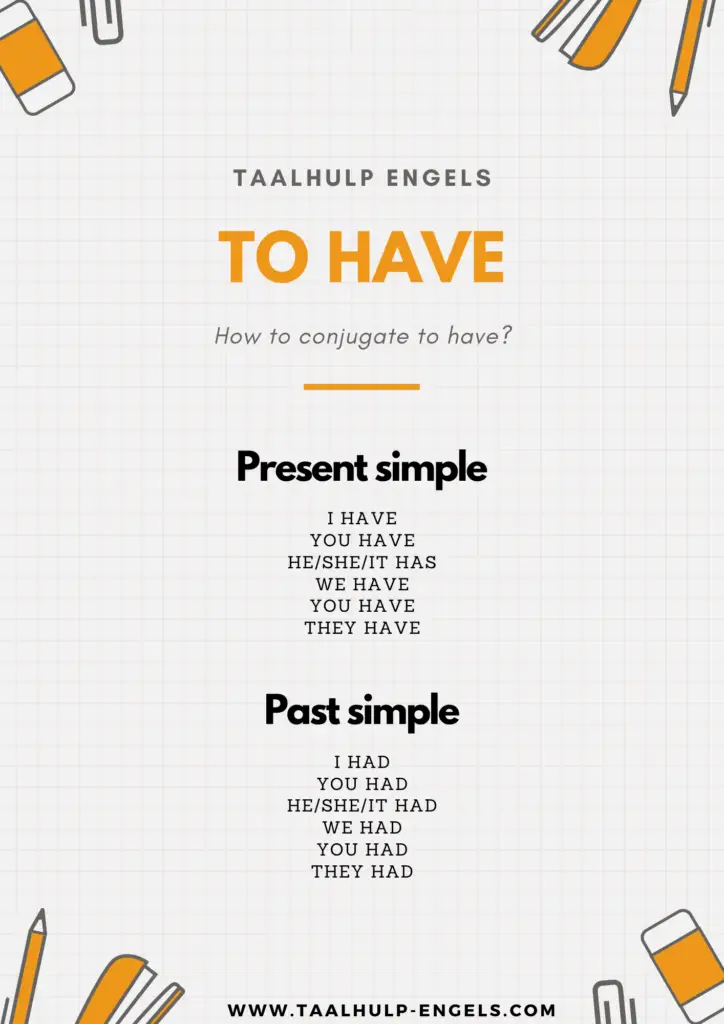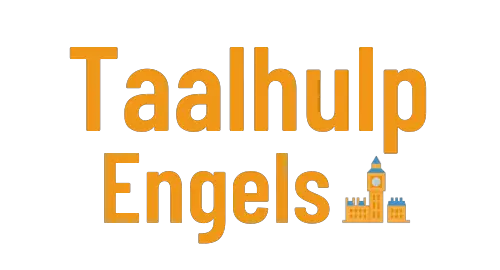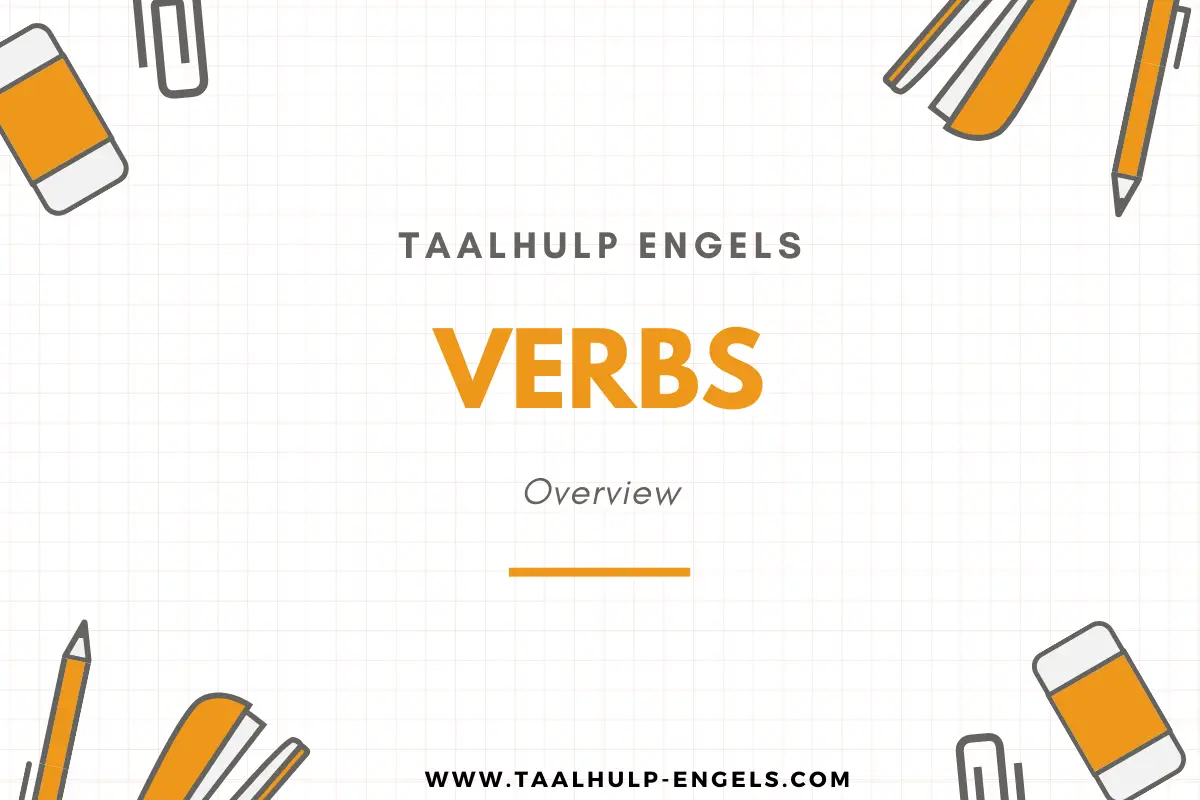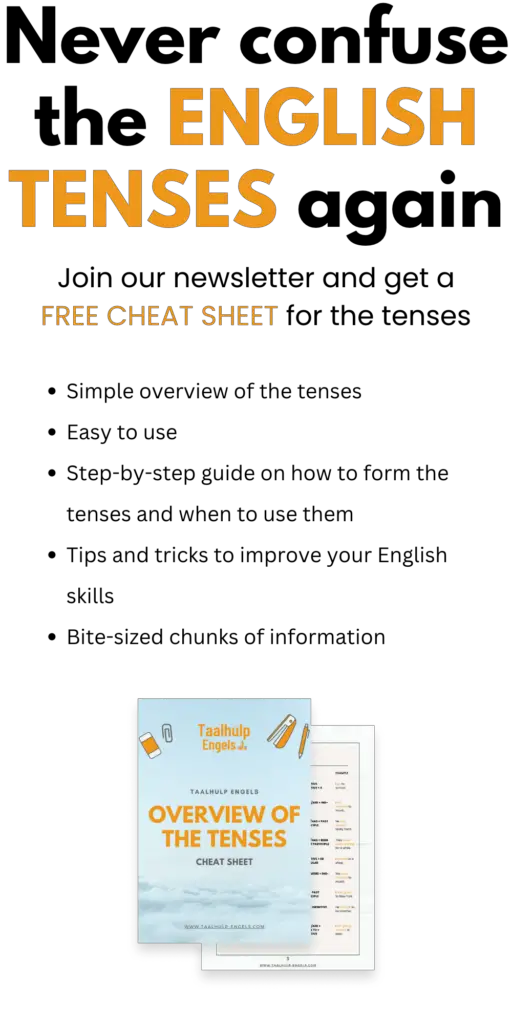English verbs are really important. Without verbs, most sentences are incomplete and won’t make a lot of sense. In essence, you use verbs to talk about an action or event or to describe a particular state.
On this page, you have a complete overview of which types of verbs there are and how you can use them. You will find some examples of regular and irregular verbs and you will also see examples of main verbs and auxiliary verbs.

Regular verbs
In English, there are two main types of verbs: regular and irregular verbs. Regular verbs are the easiest to use because you can form them by using a couple of basic rules.
The present simple of regular verbs is formed by using the infinitive of the verb. One exception is when you have a third-person singular (he, she or it). If this is the case, you need to add <s> to the infinitive.
| I walk |
| You walk |
| He walks |
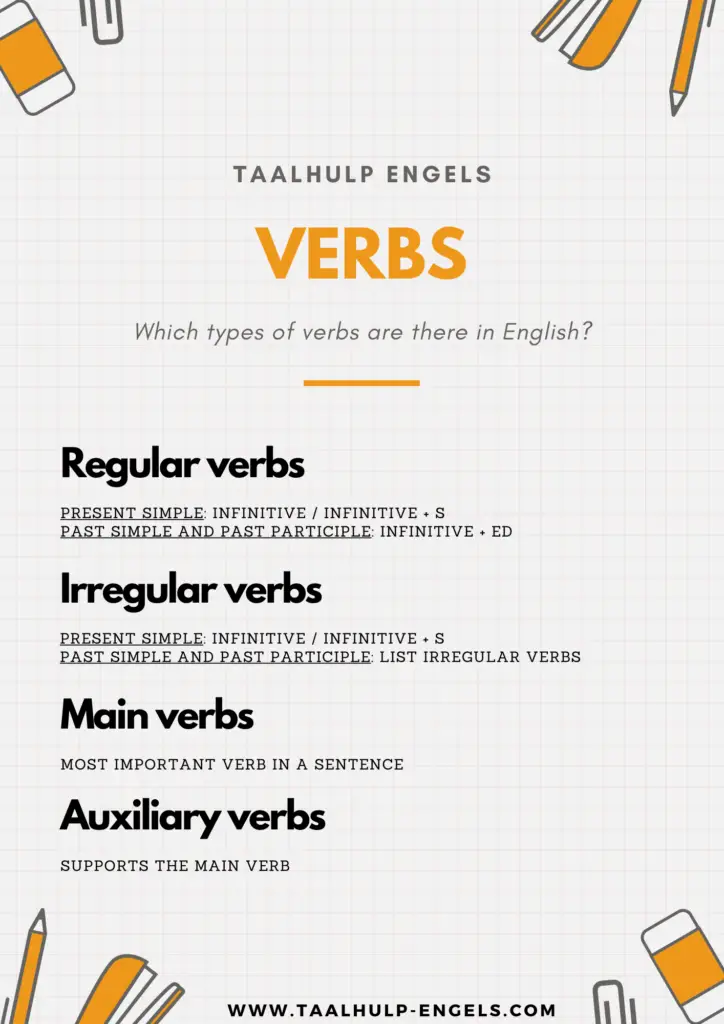
The past simple and the past participle of regular verbs are formed by adding <ed> to the infinitive.
| I walked |
| You walked |
| He has walked |
Irregular verbs
Irregular verbs are more complicated because you cannot always use rules to make particular forms. To form the present simple of irregular verbs, you also need the infinitive, just like the regular verbs. The irregular verbs also need <s> when you have a third-person singular form (he, she or it). This is the general rule but keep in mind that there are some exceptions (like the verb ‘to be’).
| I run |
| You run |
| He runs |
The past simple and past participle of irregular verbs are not formed by using standard rules. This means you need to study the different verb forms if you want to use them. You can find an overview of the most common irregular verbs in English over here. If you want to make exercises about irregular verbs, click here.
Main verb and auxiliary verb
There is also a difference between main verbs and auxiliary verbs. The main verb is the most important verb in a sentence and expresses the action or state in that sentence.
An auxiliary verb cannot be on its own because it wouldn’t have any meaning. Auxiliary verbs are used to support the main verb, which is usually placed right after the auxiliary verb. Most of the time, auxiliary verbs are used to express a particular tense or to show the difference between active and passive sentences.
Main verb
The main verb is the most important verb in a sentence. It expresses the action or state of the subject. Without this information, you wouldn’t really know what the subject is doing or what it is about.
If you have one verb in the sentence, it means that this verb is the main verb. If there are several verbs in the same sentence, you need to check which verb expresses the action or state of the subject.
The main verb can be regular or irregular. How you conjugate these verbs depends on what verb it is and which tense it needs to be in.
| I have bought |
| You bought |
| He is playing |
| We were dreaming |
Auxiliary verb
In addition to the main verb, you also have an auxiliary verb. The goal of auxiliary verbs is to support the main verb. These verbs have no particular meaning on their own and cannot appear in a sentence without a main verb.
If you want to use an auxiliary verb, you need to put it in the right form and tense. If you want to use a negative form of an auxiliary verb, you use ‘not’ and put it right after the auxiliary verb.
| I have not played |
| I have not bought a car |
| He is not singing |
The most common auxiliary verbs are ‘to be’, ‘to have’ and ‘to do’. You can find the conjugations of these verbs in the present simple and past simple below.
To be
| Present Simple | Past Simple |
|---|---|
| I am | I was |
| You are | You were |
| He/she/it is | He/she/it was |
| We are | We were |
| You are | You were |
| They are | They were |

To do
| Present Simple | Past Simple |
|---|---|
| I do | I did |
| You do | You did |
| He/she/it does | He/she/it did |
| We do | We did |
| You do | You did |
| They do | They did |
When you use ‘to do’ as an auxiliary verb, you only conjugate ‘to do’. You cannot have two conjugated verbs in one sentence. You conjugate ‘to do’, followed by the infinitive of the main verb.
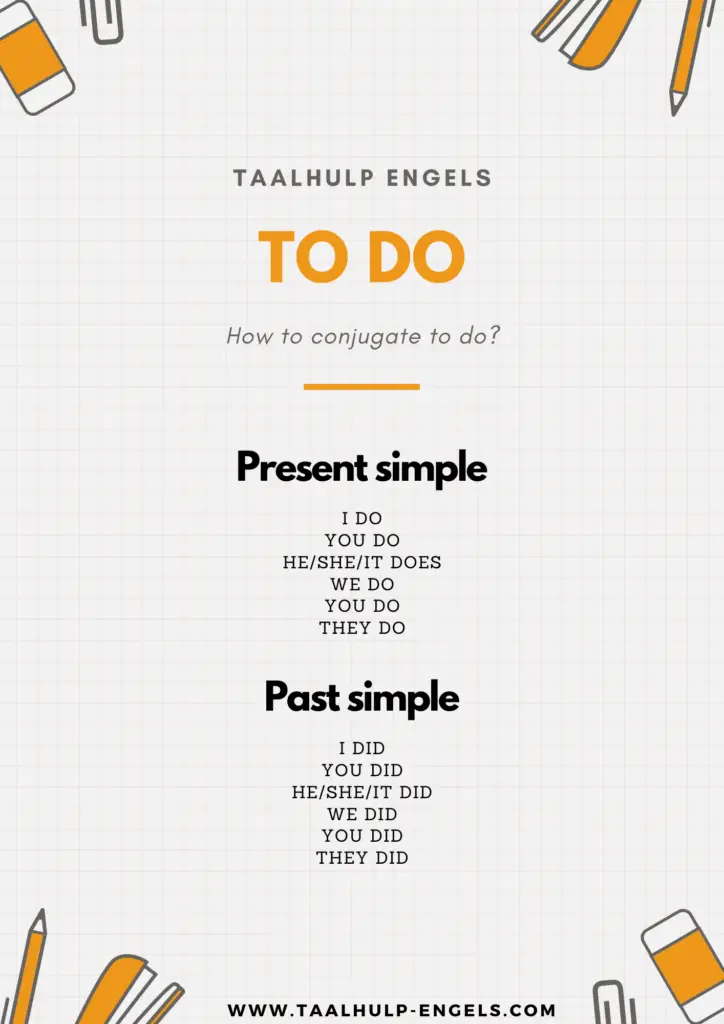
An example of this is when you use ‘to do’ to emphasize something.
| I did tell them |
| You do want to go |
| He does have a car |
To have
| Present Simple | Past Simple |
|---|---|
| I have | I had |
| You have | You had |
| He/she/it has | He/she/it had |
| We have | We had |
| You have | You had |
| They have | They had |
